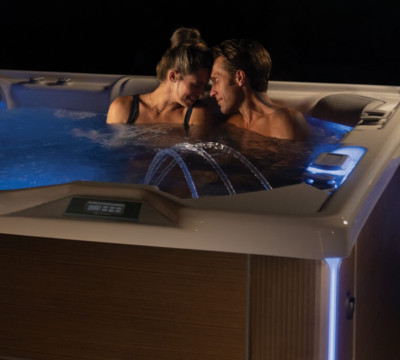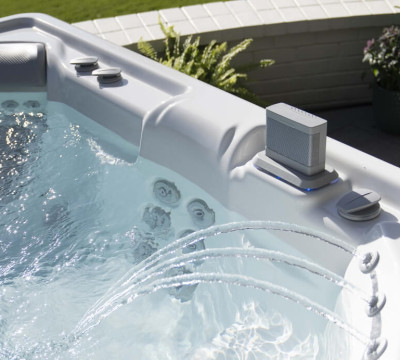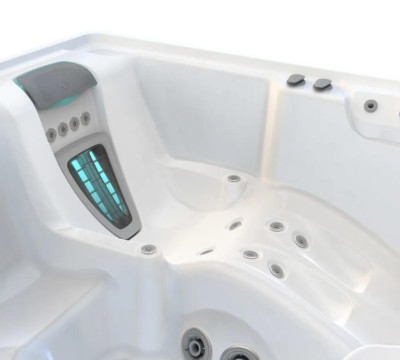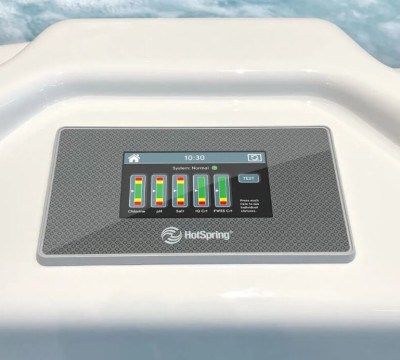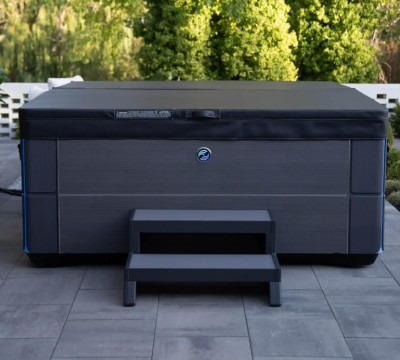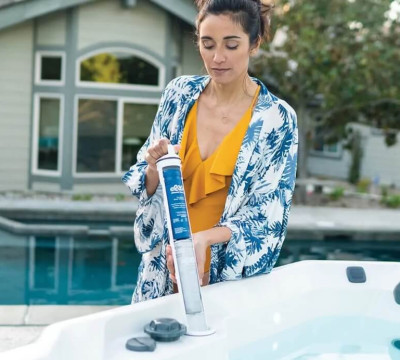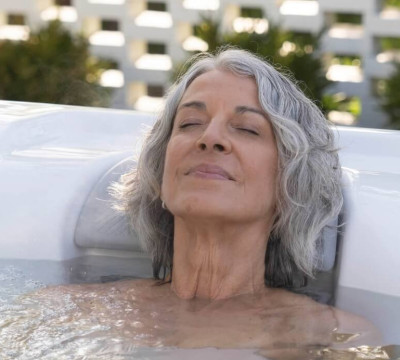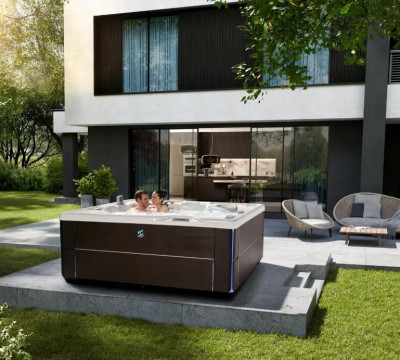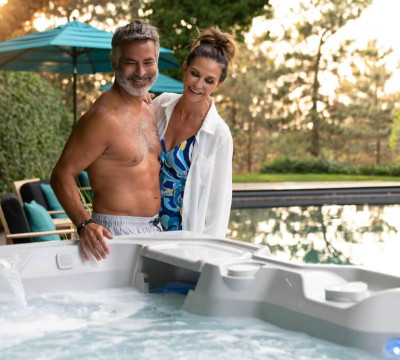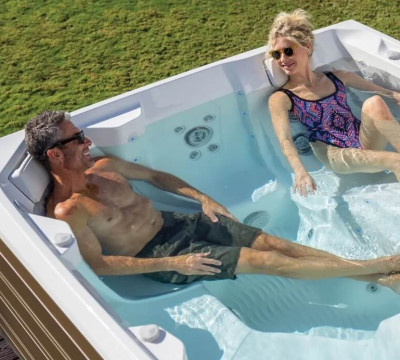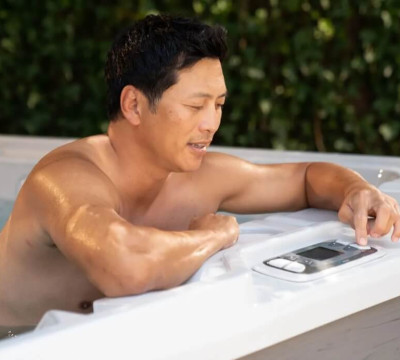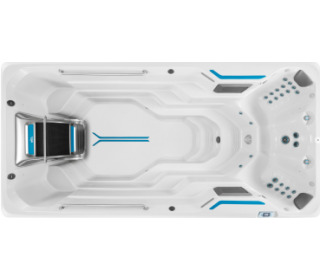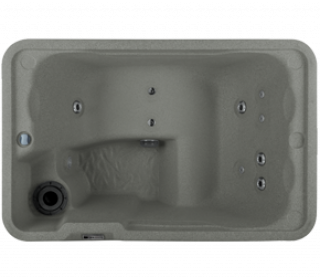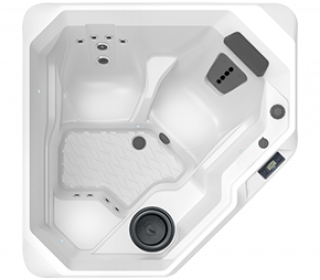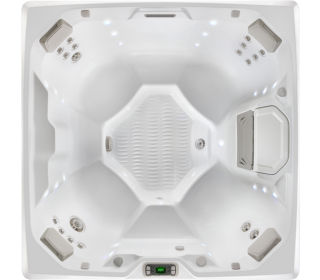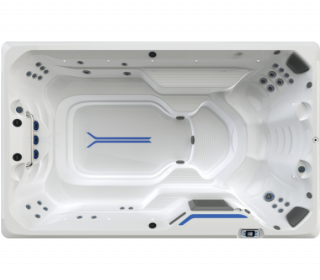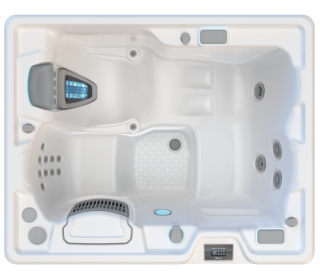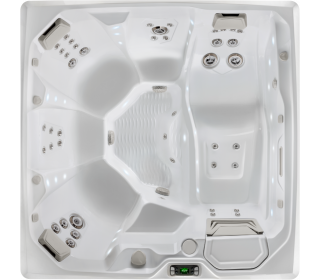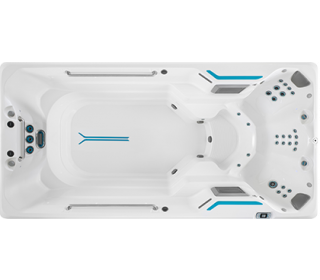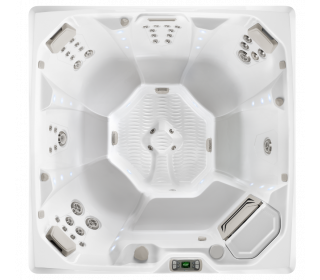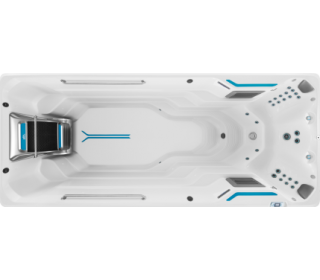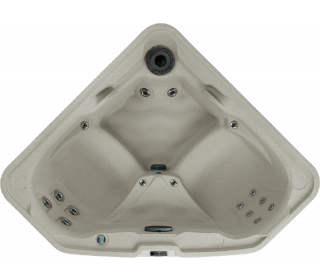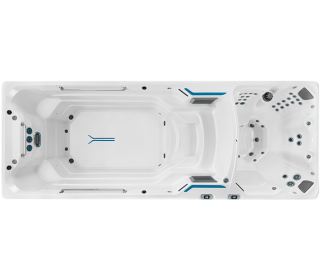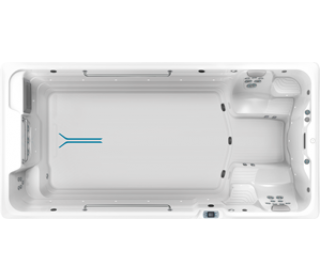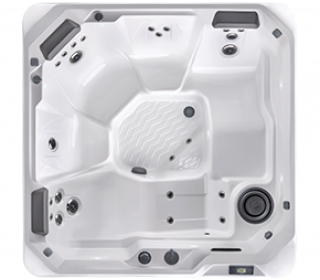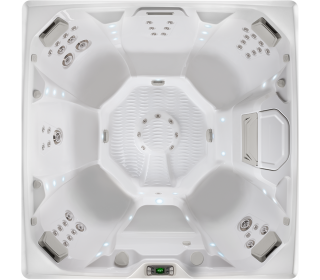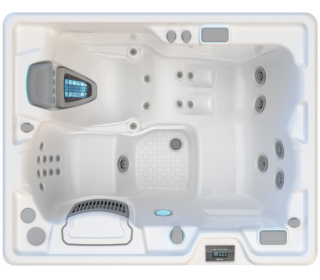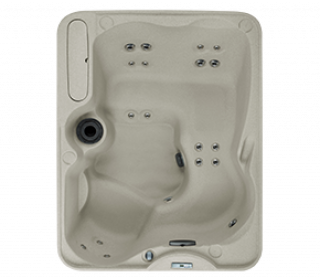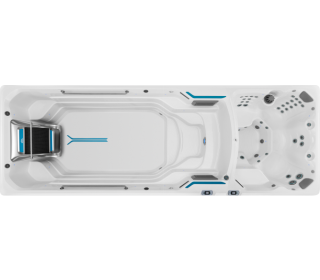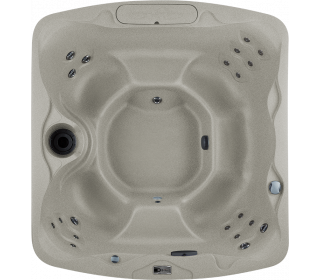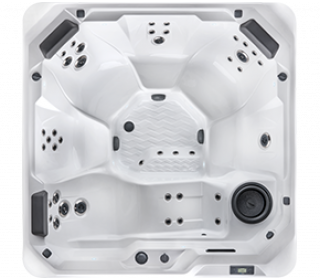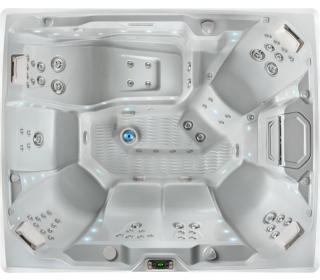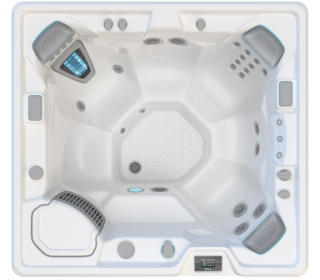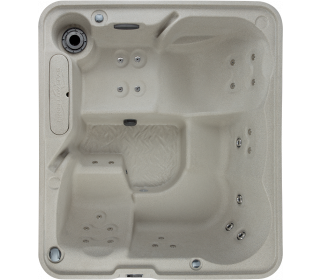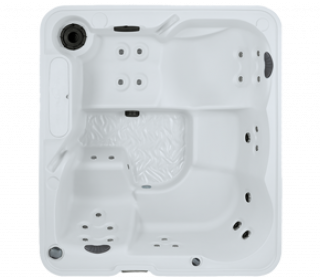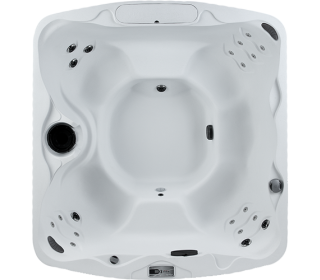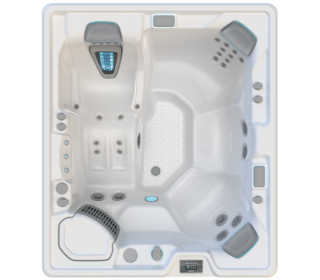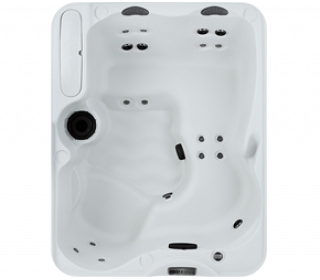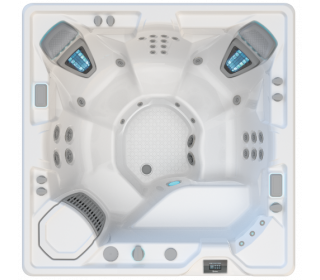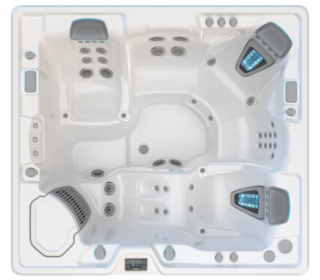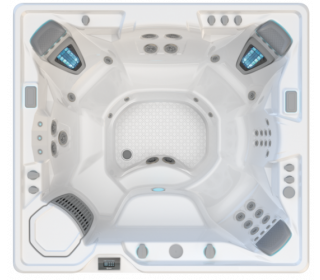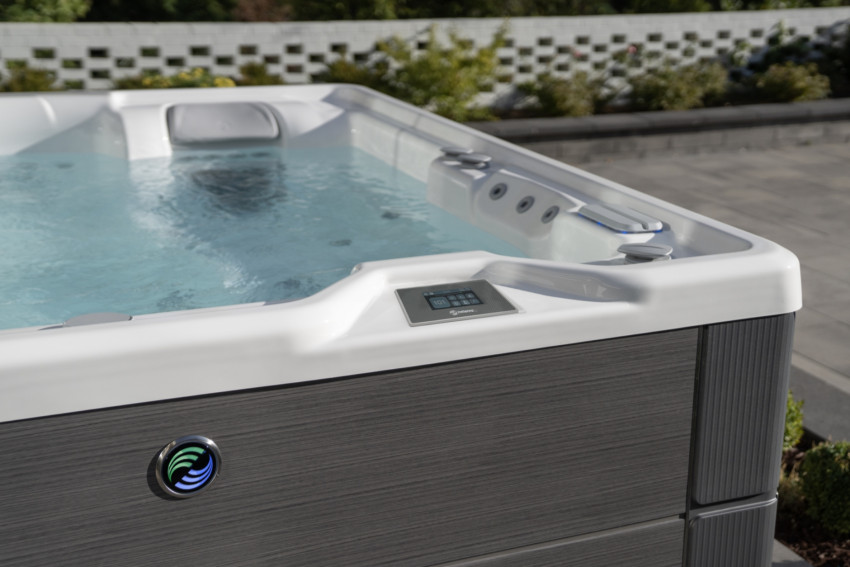Hot water is the key ingredient in a spa pool, and two technologies must work in tandem to create the warm and luxurious H2O that hot tubs are known for: a heater to get the water to the temperature you want, and insulation to keep it there. But not all insulation is made the same.
The best spa pool insulation is undoubtedly multi-density full foam – the same technology that is used in commercial freezers and other extreme temperature environments that demand a high-performance insulator. There are other insulation technologies that are worth considering though, particularly if upfront affordability is a key factor in your purchase decision.
Hidden away within the cabinetry, insulation is rarely the first factor considered when buying a spa. But this factor perhaps more than any other will decide how comfortable and cost-effective your spa pool ownership experience will be. While the jets, lights and water features might be eye-catching, a smart spa pool buyer won’t let the bells and whistles distract them from what’s inside the machine.
The spa pools found in the Freeflow and Hot Spot ranges, such as the Azure and Propel, combine efficient FiberCor insulation with cost-effectiveness, which makes these some of the most affordable and best spa pools in Australia.
Let’s take a deep dive into spa pool insulation: the best, the rest, what a potential hot tub owner should be looking for, and what they should avoid.
Is insulation important for a hot tub?
First things first: is insulation really that important? The answer is a resounding yes.
Think of living in a badly insulated house over winter, with its single-glazed windows, unsealed gaps and old wall and roof batts. You have two choices: put up with a constant chill or get comfortable by dialling your heating system up to 11. Anyone who has lived through a winter in this sort of house will know that you inevitably choose the latter, only to face dire consequences when that first post-winter power bill is delivered.
You can think of a spa pool in the same way: as a sort of small, water-filled home. A badly insulated spa pool gets chilly and uncomfortable quickly. The issue isn’t in getting the spa up to the right temperature – the heater works just fine – it’s in keeping it there. The heater has to work overtime, and your power bill will reflect that fact.
If you only use it a handful of times a week, a badly insulated spa will cool down to ambient temperature. Not only will you need to use a lot of power to get it warm again, you’ll also have to wait hours. A badly insulated tub is inconvenient: you can’t enjoy a relaxing soak on a whim, like as soon as you get home from a hard day at work, because the spa won’t be ready for you. And because components like heaters need to work harder, they’ll also wear out faster.
A well-insulated spa pool, on the other hand, is ready whenever you need it. And because it retains heat so efficiently, it uses far less power and demands far less from the heater, greatly reducing running and maintenance costs. When years of power bills and upkeep are taken into account, a premium spa pool can end up costing far less than a ‘cheap’ spa pool.

What is the best insulation for a hot tub?
If you’re ready to shop for a spa pool, what insulation should you be looking for? There are five main types of spa pool insulation, each of which offers a different level of heat retention. From least efficient to most efficient, they are:
1. Partial foam
Common to the cheapest spa pools on the market, this type of insulation does exactly what it says on the tin. Spray foam fills only part of the cabinetry, allowing for a lot of heat to leak out. Sure, you can expect a lower purchase price, but if you go this option you need to be prepared for those initial savings to be quickly vacuumed up by high power and maintenance bills, particularly if your area experiences cold winters
2. Thermal wrap
Balancing efficiency and cost, thermal wrap insulation sees a number of materials layered in a way that offers high-performance heat retention. The Tri-Thermic™ Barrier System seen in Fastlane Pools® swim spas, for example, features a thick layer of expanded polystyrene foam, a 50mm heat blanket of recycled textile fibres, and a final layer of heat-reflective foil.
3. Full foam
The industry standard in spa pool insulation technology – at least for premium brands – full foam sees the cabinet being filled with the dense, high-performance insulation found in commercial freezers. The result: heat stays in, cold stays out. Because full foam encapsulates all the components of your spa, it also reduces vibration, wear and tear, and adds structural integrity, extending the life of the machine.
4. FiberCor®
FiberCor® is a proprietary insulation technology unique to Hot Spring. It is quite different to foam, in that it is a flexible, wool-like insulation able to be in fed into all the cracks and crevices of the spa cabinet. It is also four times denser than regular foam, making it a fantastic insulator.
5. Multi-density full foam
Our Highlife® range delivers the ultimate efficiency to a spa pool. Using multi-density foam i.e. foams of various densities are sprayed with two different densities of foams on the shell, four different densities in the cabinet, and sealed with extremely dense foam on the bottom. Each layer is specifically engineered to provide structural support in addition to insulation. The combination also minimises expansion and contraction to the components. The end result is the best possible insulation, leading to the lowest possible operating costs, saving customers between $365 to $2,000 a year when compared to poorly insulated spas.
Should you put foam under a hot tub?
Does the surface on which you put your spa affect its insulation performance? The answer depends on the spa you choose – if you’ve gone for a cheap model, then yes, placing it on cold pavers could mean that your water cools down far more quickly than it might’ve if you placed a foam mat underneath.
But if you choose a high quality, well-insulated spa pool, you’ll have no such worries. All Hot Spring spas are fully insulated, whether with FiberCor, thermal wrap, full foam or multi-density insulation. The Highlife® Collection goes a step further, featuring a base pan that further insulates the spa from the ground. The lightweight polymeric substructure and heavy-duty base pan enhances insulation and limits ground contact which further reduces the intrusion of cold air.
All Hot Spring spa pools are engineered to withstand Australia’s harsh external conditions, unlike cheap spa pool brands. No matter where you place your spa, or what you place it on, you can expect that it will be warm and welcoming whenever you might feel like a soak.
Ready to immerse yourself in some of the best insulated spa pools on the market? Get in touch with our friendly team today!


